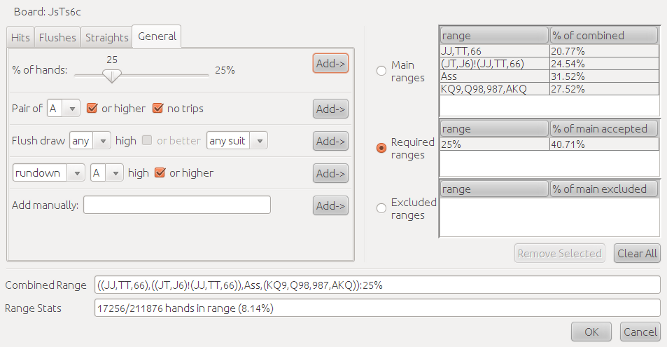
The advanced range constructor is a powerful tool for the construction of hand ranges. It is available for the omaha games when using generic syntax.
The advanced range constructor allows you to construct hand ranges one piece at a time using a few simple menus. For our first example, let's suppose that we open with a pot-sized raise on the button, and are called in the big blind. We know from experience that this opponent will call with a wide variety of hands here, but would have re-raised with a big pair or rundown. Our goal is to model a reasonable approximation of our opponent's range.
First, we choose 'Omaha' and 'Generic Syntax' in the main window, and then click on the 'Player 1' button to begin constructing the range.
Below is the advanced range selector window. On the left hand side are the various different kind of ranges we can select. On the right hand side are three lists where our range will appear one piece at a time. At the bottom, we have our combined range and some basic statistics. First, we said that our opponent would call with a wide range of hands here. As a first approximation, let's say he'll call with anything in the top 65% of hands. We move the "% of hands" slider to 65%, and then click the add button. Shortly after we click the add button, we see that our combined range currently has 175961 hands in it.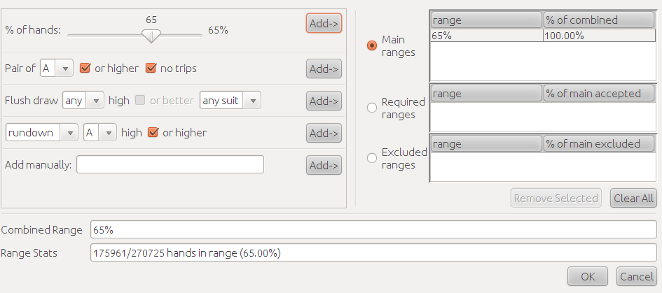
Next, let's exclude the hands he would have raised with one piece at a time. Since we want to exclude something from his range, we click on the "Excluded ranges" button. Next, we choose "A pair of Q or higher" and click the add button. Afterwards, we can see that our range has 155861 hands in it, and our exclusion of large pairs removed 11.42% of the total range.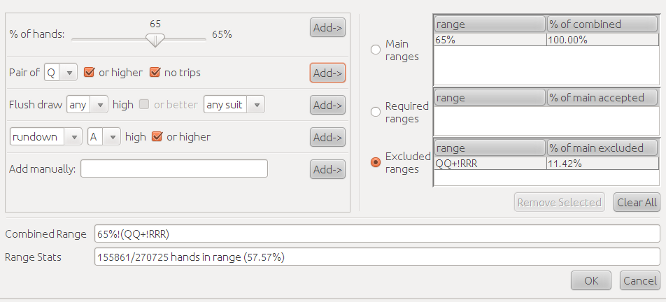
Finally, let's exclude the strongest rundowns. We will exclude rundowns and 1-gaps that are jack-high or higher. We can see from the "excluded" window that rundowns are quite a bit less common than the large pair hands.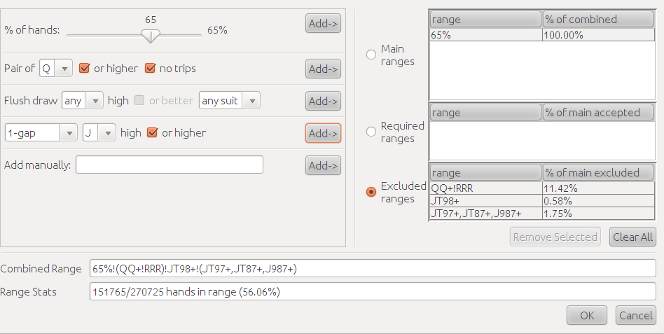
Our range is done! We can click OK and proceed.
Constructing ranges after the flop is where the advanced range constructor truly shines. For this example, let's assume that our reasonably tight opponent open raised from the small blind. The flop came JsTs6c, and he bet the pot.
Once again we choose 'Omaha' and 'Generic Syntax' in the main window. We enter the board, and then click on the 'Player 1' button to begin constructing the range.
Because we entered a board, our range picker has a much larger set of pre-constructed ranges to choose from,
including hands that "hit" the board, straight ranges, and flush ranges.
First, let's handle board "hits". Let's assume our opponent would bet any set - we click the "add" button next
to "Set+" and the sets are added to his range. Next, assume he would bet any two-pair except for bottom two.
We de-select "T6" and click the "add" button next to "2+ hits (no sets)". Here is our range so far: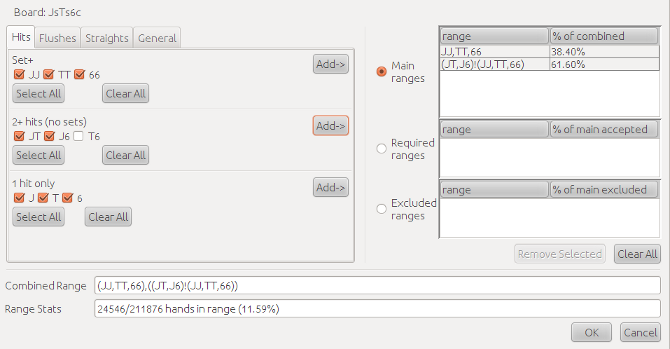
Next, we click on the "Flushes" tab. Let's assume our opponent would fire with any ace-high four-flush. Note that the constituent parts of the range total more than 100% - this is because there are some ace-high flush draws that are also sets or two-pair. Here is our new range: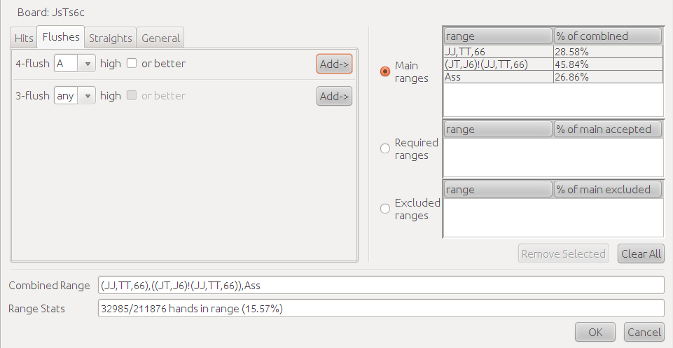
Next, we click on the "Straights" tab. Let's assume our opponent bets with
any 4-6 out (16-24 card) straight-draw. Here is our almost-complete range: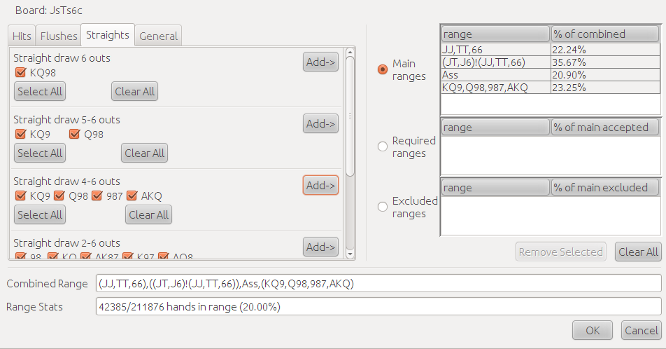
Finally, let's assume our opponent would only raise in the small-blind with a reasonably strong hand.
We go to the "General" tab, click on the "Required" button, and add the top 25% of hands to the "required" list.
Our range is now complete!